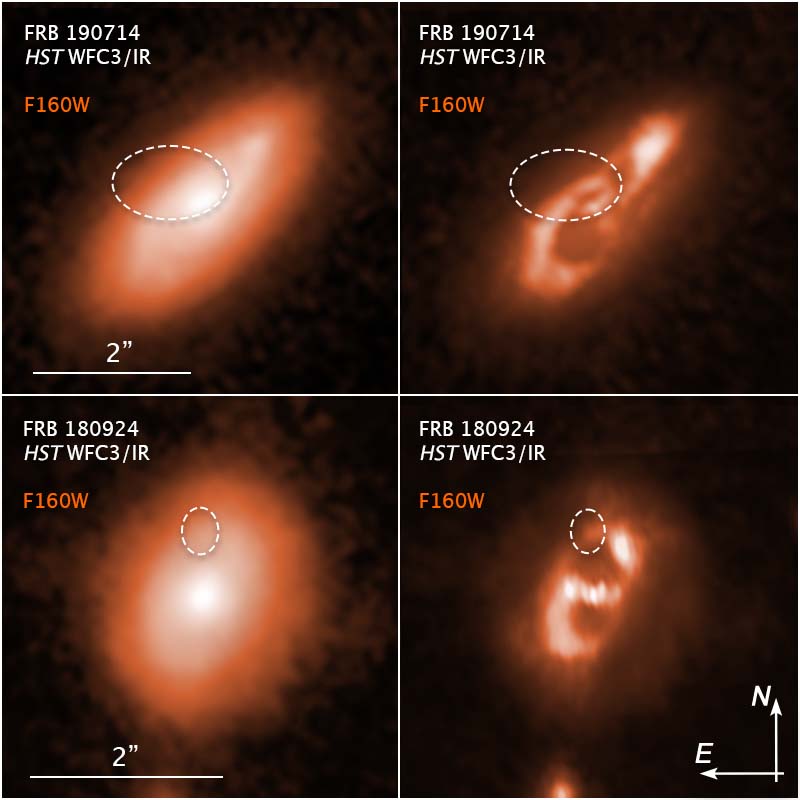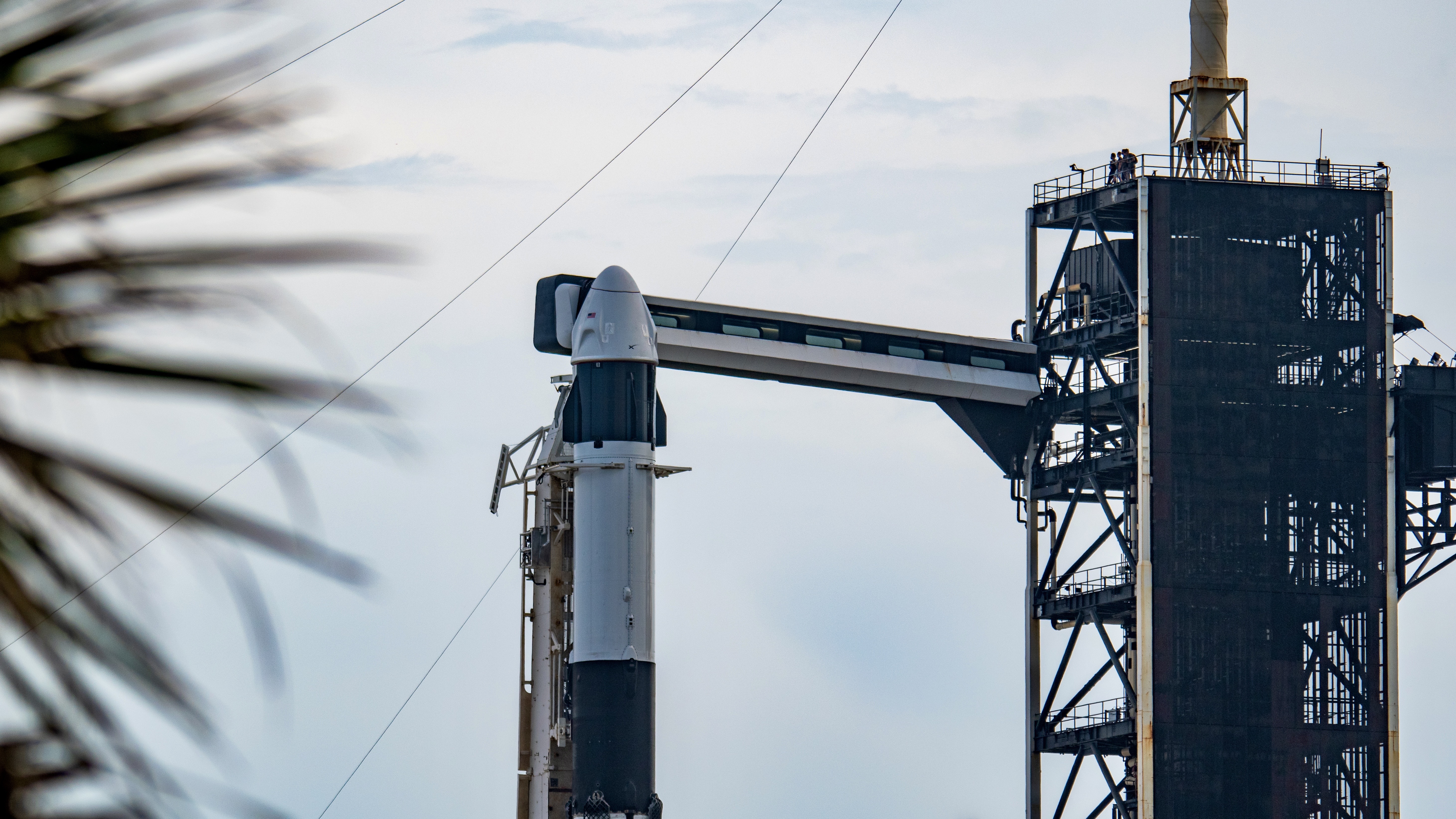Hubble Space Telescope traces 5 mysterious 'fast radio bursts' to distant spiral galaxies
New Hubble Space Telescope observations have given more credence to a theory explaining mysterious radio energy bursts.
The long-running observatory tracked down five fast radio bursts (FRBs) to the spiral arms of five faraway galaxies. FRBs are notoriously hard to trace because the bright flares fade so quickly, and astronomers have only found about 1,000 of them so far, but there are a few theories about their origin stories.
By deduction, the study team discarded older hypotheses associated with FRBs. Because the newly found bursts don't come from regions full of massive stars, this set likely can't be associated with star explosions — such as those that produce supernovas.
Video: Fast radio bursts traced to spiral arms of several galaxies by Hubble
Related: Mysterious 'fast radio bursts' fire rhythmically through the cosmos

These FRBs also didn't come from old city-sized star cores (or neutron stars) merging, as such collisions are rare and tend to take place far outside of galactic arms, the researchers found. Rather, the Hubble observations from 2009, 2019 and 2020 suggest FRBs may come from magnetars — a type of neutron star that is highly magnetized.
A typical magnetar has a field 10 trillion times more powerful than a refrigerator door magnet, Hubble officials said in a statement. Additional weight for the FRB magnetar hypothesis comes from a 2020 study of the Milky Way, which found an FRB originated in the same zone as a known magnetar.
Hubble observed the bursts using ultraviolet and near-infrared light obtained with its Wide Field Camera 3, which NASA astronauts installed during the last telescope servicing mission in 2009. Combining these two wavelengths allows the astronomers to estimate the observed galaxies' mass (using infrared), to find young stars (using ultraviolet) and to seek out older stars (again, using infrared).
Get the Space.com Newsletter
Breaking space news, the latest updates on rocket launches, skywatching events and more!
"The [Hubble] imaging allows us to get a better idea of the overall host-galaxy properties, such as its mass and star-formation rate, as well as probe what's happening right at the FRB," lead author Alexandra Mannings, a graduate student at the University of California, Santa Cruz, said in the statement.

The new work allowed astronomers to downplay another suggestion for the origin story of FRBs, too. Some past studies from ground-based telescopes suggested the bursts may come from dwarf galaxies, as the telescopes did not see spiral arms or other substantial galactic infrastructure. Advanced image processing and analysis of the Hubble data allowed scientists to rule that explanation out for this set of FRBs.
"We don't know what causes FRBs, so it's really important to use context when we have it," study team member Wen-fai Fong, an astrophysicist at Northwestern University, said in the statement. The imaging technique her team used has helped identify other sorts of "transient" events in the skies, like supernovas and another type of massive energy eruption known as gamma-ray bursts.
A study based on the results will appear in an upcoming issue of The Astrophysical Journal. A preprint version is available on Arxiv.
Follow Elizabeth Howell on Twitter @howellspace. Follow us on Twitter @Spacedotcom and on Facebook.
Join our Space Forums to keep talking space on the latest missions, night sky and more! And if you have a news tip, correction or comment, let us know at: community@space.com.

Elizabeth Howell (she/her), Ph.D., was a staff writer in the spaceflight channel between 2022 and 2024 specializing in Canadian space news. She was contributing writer for Space.com for 10 years from 2012 to 2024. Elizabeth's reporting includes multiple exclusives with the White House, leading world coverage about a lost-and-found space tomato on the International Space Station, witnessing five human spaceflight launches on two continents, flying parabolic, working inside a spacesuit, and participating in a simulated Mars mission. Her latest book, "Why Am I Taller?" (ECW Press, 2022) is co-written with astronaut Dave Williams.
